After retiring two years ago from the Art department of the University of Maryland Baltimore County, where I managed the photography facilities for over forty years, I have been volunteering at the Special Collections of the Albin O Kuhn Library. My main tasks are updating an inventory spreadsheet of photography equipment that has been housed in the collection since it was founded in 1975. I match an object’s tag number and check the database for accuracy. While checking, correcting, and adding information to the inventory sheet, I’ve found interesting and unusual items and have chosen to digitally photograph some of them. Hopefully my images will add to a broader understanding and wider interest in these historic cameras and lenses. Realizing my excitement over these objects, the curator has allowed me to shoot with some of the cameras and lenses from the collection. I’ve selected just one of my favorites from this collection to discuss here, but you can find more on my Instagram account listed the end of this article.
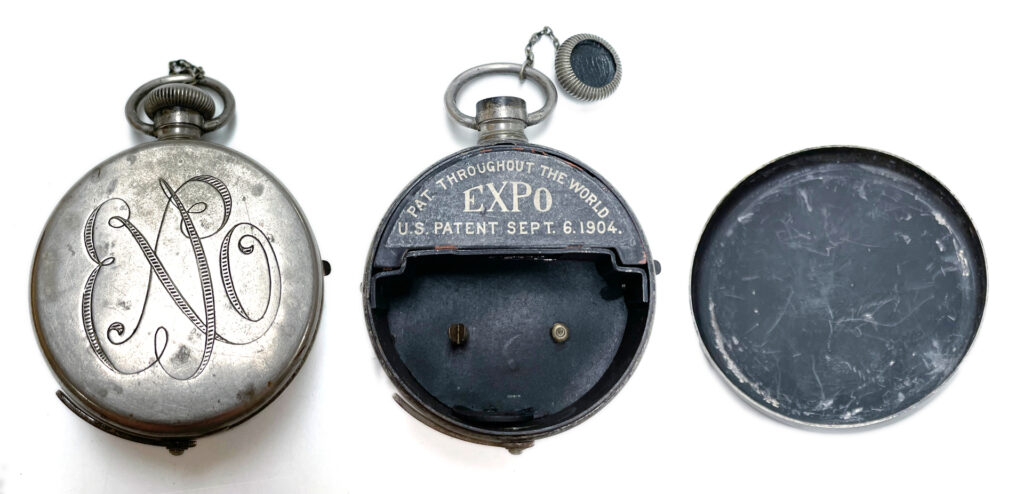
The Expo watch camera, which is part of the Photography Collection, was designed in the early 1900s by Swedish engineer Magnus Neil. It was first made in England as the “Ticka” then it was patented in 1904 in the USA and sold as the Expo. The Expo is made to resemble a pocket watch but without a watch face. Inside the camera under a plate was the shutter spring. I needed to clean and lubricate this spring to restore the shutter functionality. A little lever on the side will then cock the shutter. The cap is removed from the stem and a button on the side fires the camera’s shutter with about a 1/20th of a second. The cap then needs to be replaced because re-cocking, the shutter opens briefly as it’s locked into place. At the bottom there is a lever to open the camera. Inside there should be a compartment for a spool of film; unfortunately, this was missing on our camera. I used my 3D printer to make a replacement film plane so I could insert 16mm x 32mm sheets of X-Ray film into the camera, using a changing bag and an empty sheet film box to store and reload the camera.
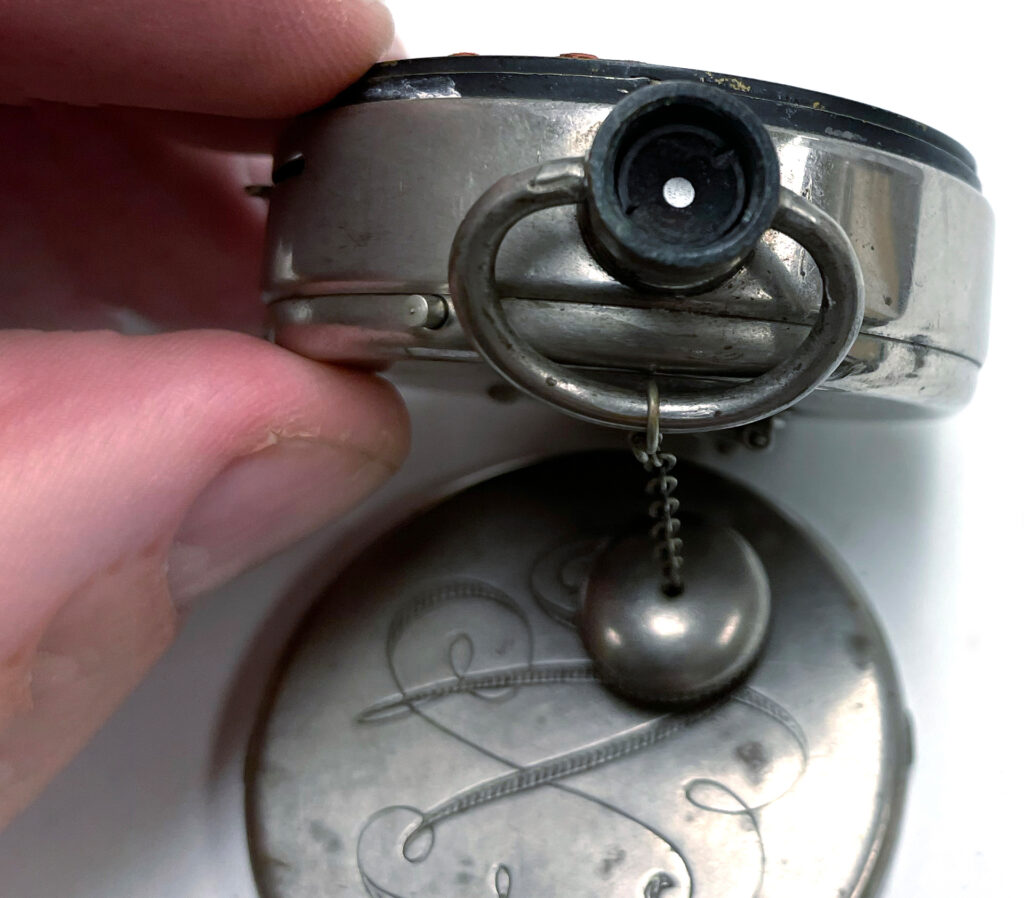
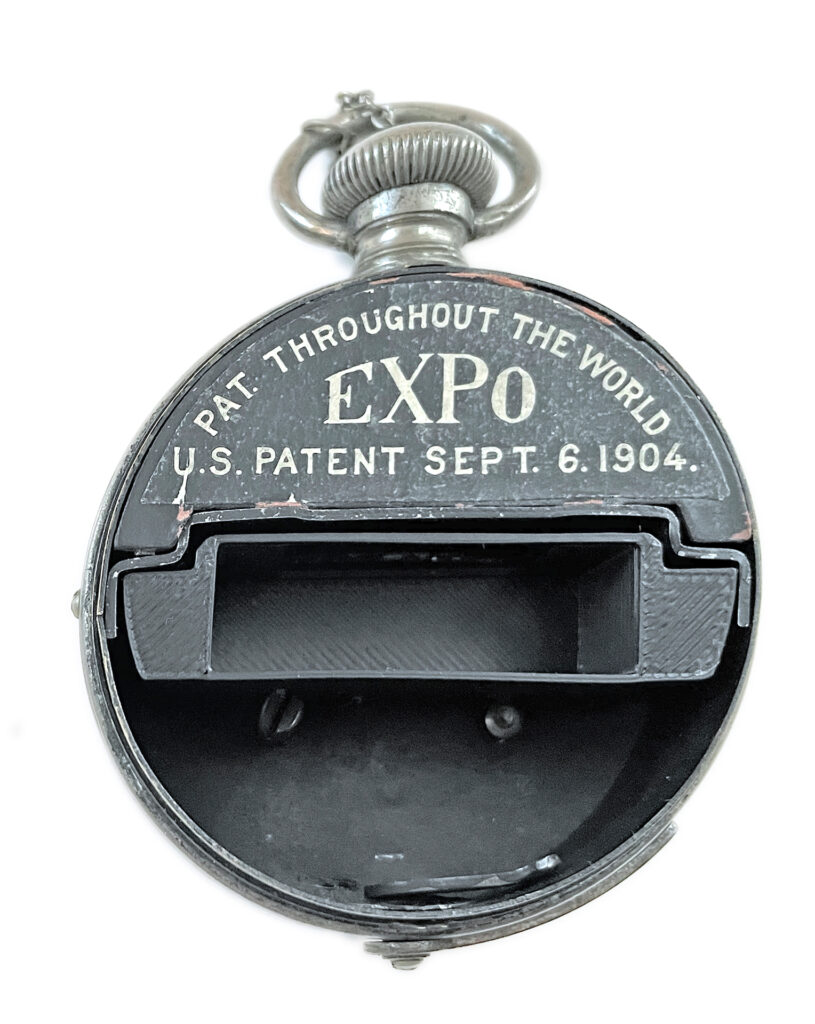
I chose Fuji HR-U X-Ray film to shoot in the Expo because it is double sided so I wouldn’t need to worry about the emulsion side facing the correct direction when reloading the camera in a changing bag. I rate this film at ISO 100 and develop it in Kodak HC-110 1:100 for about 7 minutes in a tray by inspection. It can be handled and cut down under a dark red safelight, so it is perfect for this unusual camera.
This camera was also missing its viewfinder, so I tried to keep the Expo level when shooting. The shutter choices are marked as “I” for instantaneous or “T” for timed or long exposures. following images were made on a sunny day on the UMBC campus.
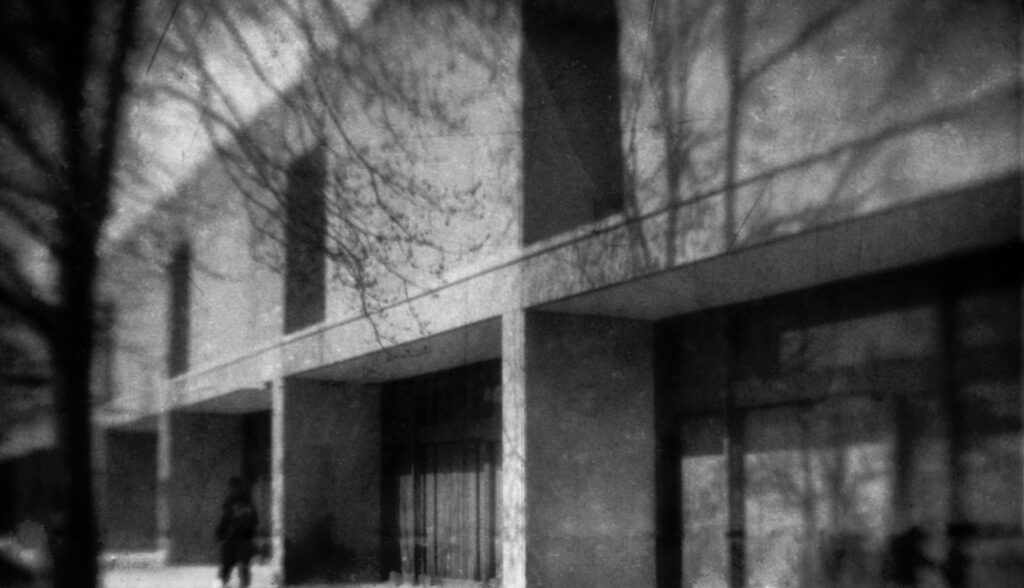
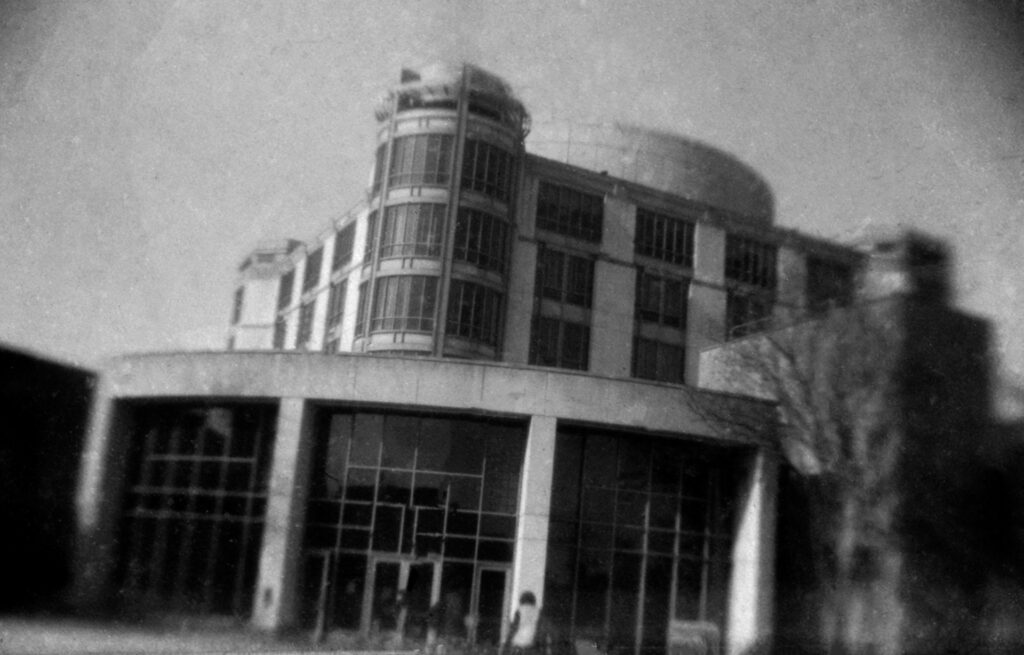
I figured that with the ISO 100 X-Ray film I could capture images in cloudy or lower light conditions, so I then tried shooting on a rainy day.
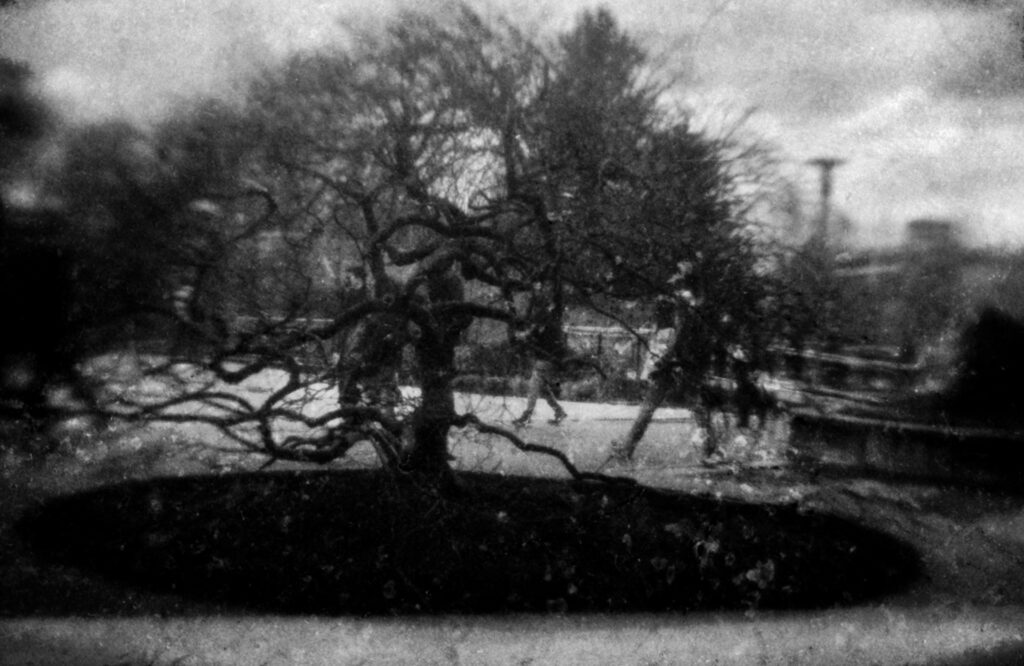
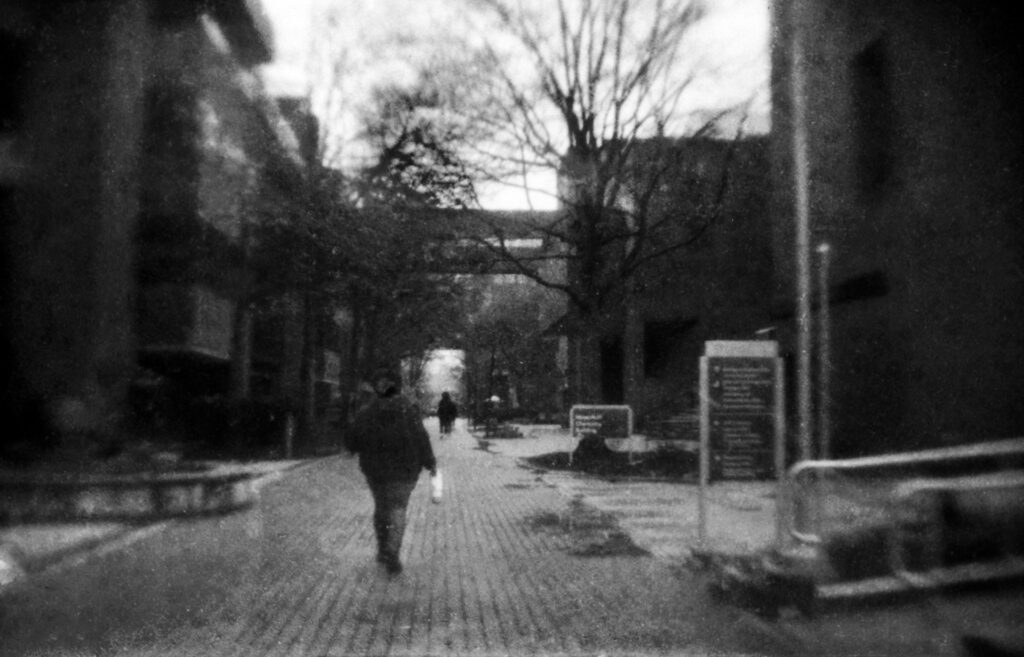
After this success, I then tested the “T” setting at my local pub. By measuring the focal length and approximate size of the lens opening I guesstimated the aperture to be f/16. Using this I metered my scene and guessed that 1 minute would be a good exposure. Using the Expo as a spy camera I captured this scene and caught unsuspecting pub patrons enjoying a pint. I think the exposure was right on.
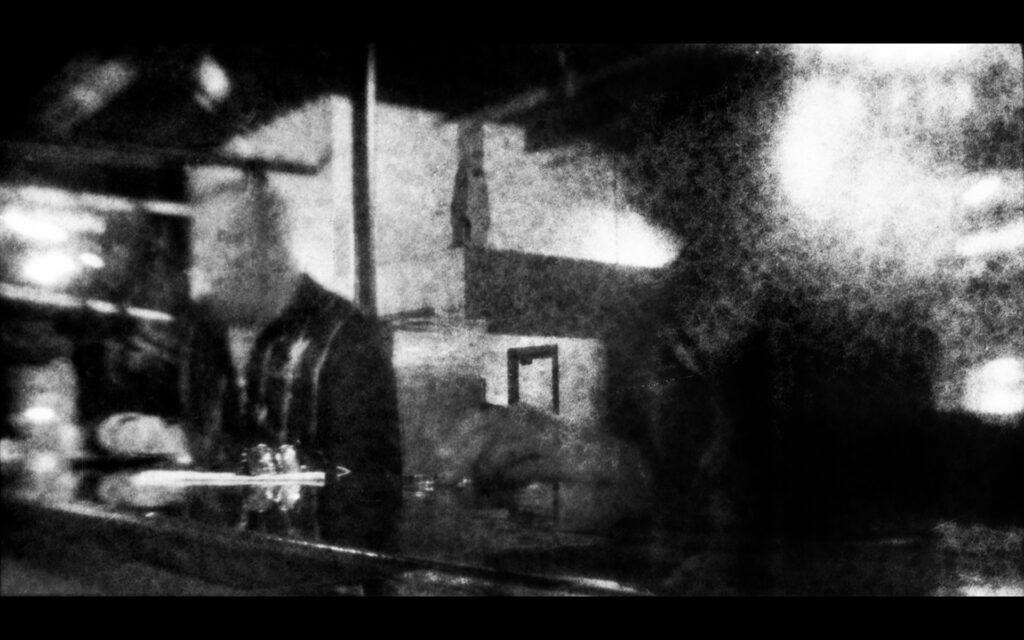
The Expo camera was challenging to use but with some practice loading it in a changing bag it became a cool camera that made for fun conversations with my subjects. As my 3D modeling skills improve, I’d like to be able to make a film cartridge and roll film for this camera, but using single sheets of X-Ray film was a great way to test out this rare camera.
Analyzing images published in an Expo brochure from 1909 that I found online at pacificrimcamera.com the frame size seems to be a 3×4 ratio. My frame width was slightly longer than this and it shows some spherical aberrations at the edges. The original frame size would give less distortion, but I like the look of my image.
You can see some of the other cameras from the collection that I’m helping to catalog at Collection of Cameras.
To see more of my artwork you can find me on Instagram or see my webpage.
Share this post:
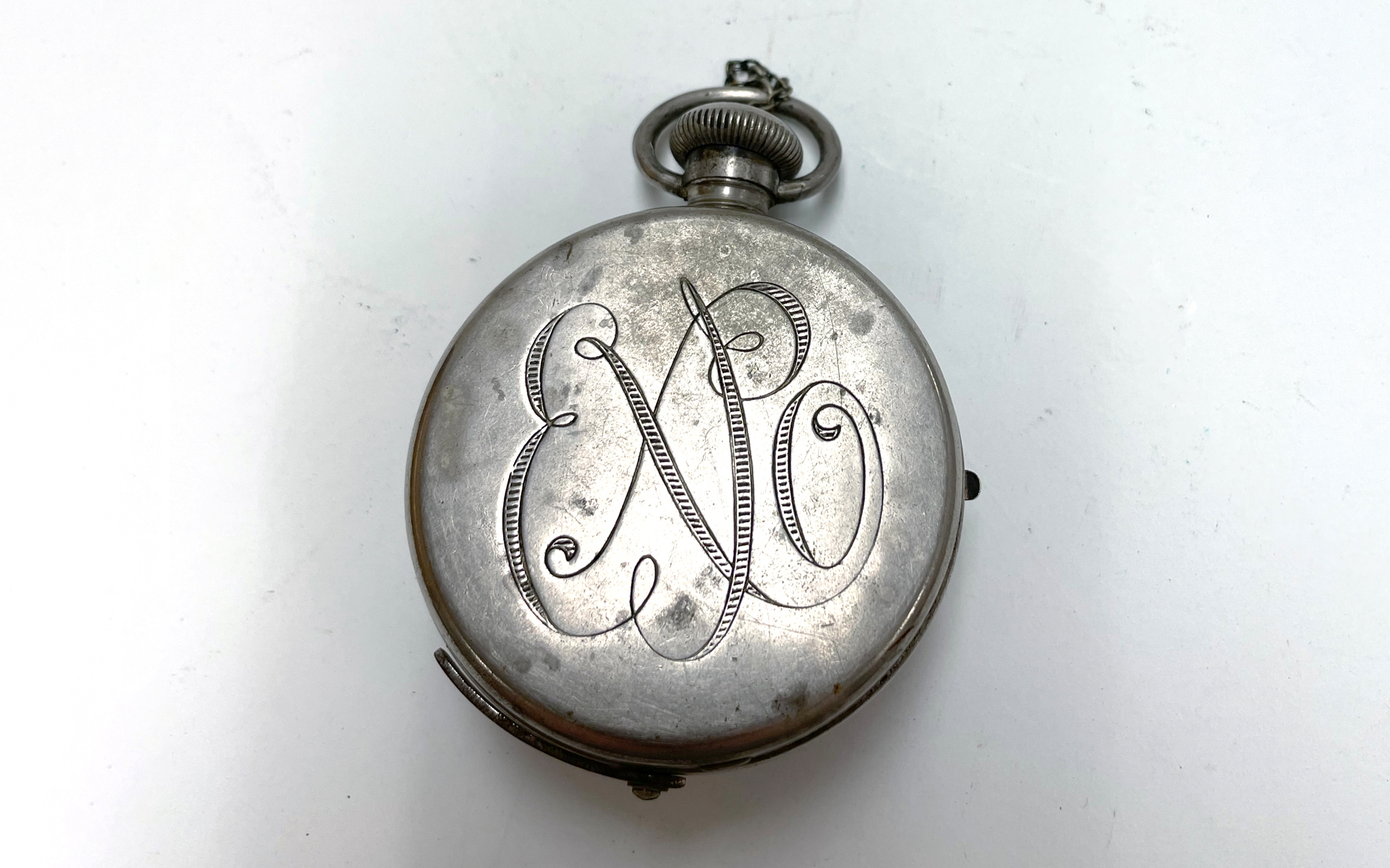
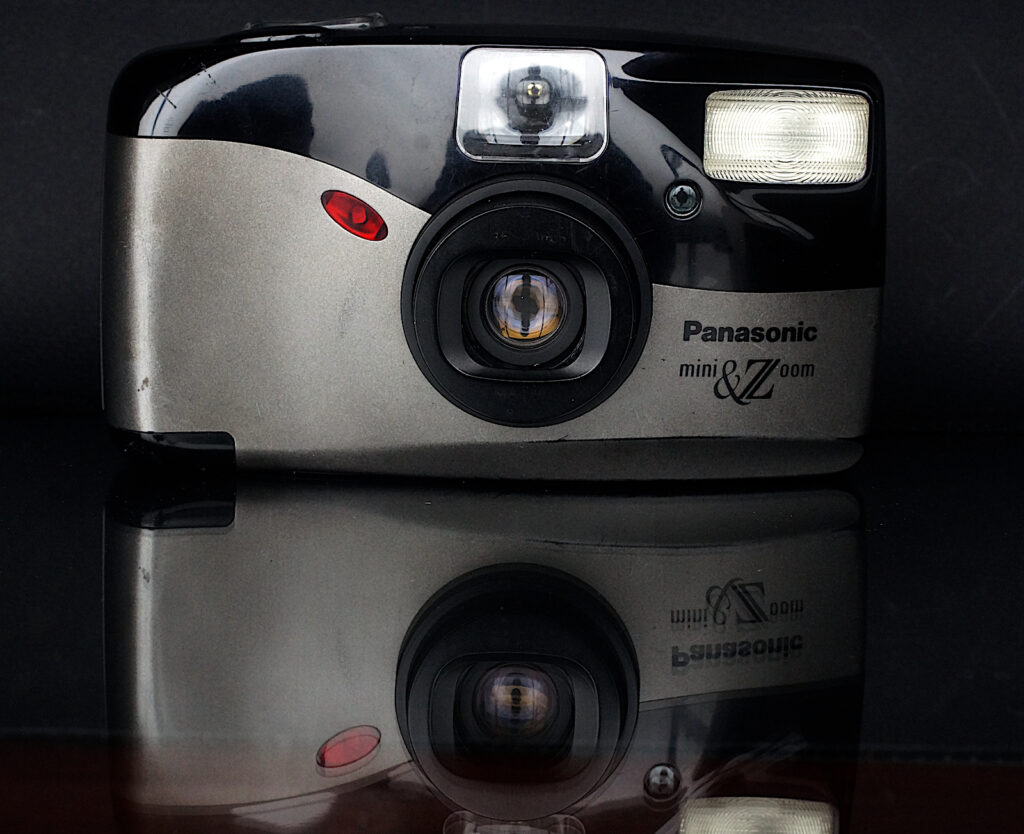
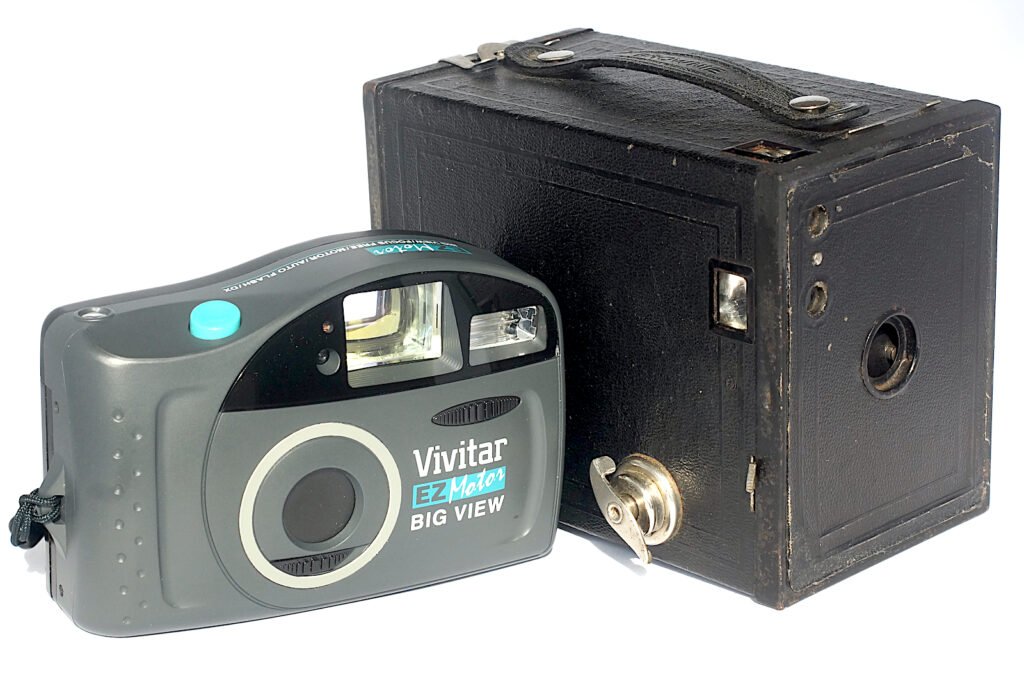
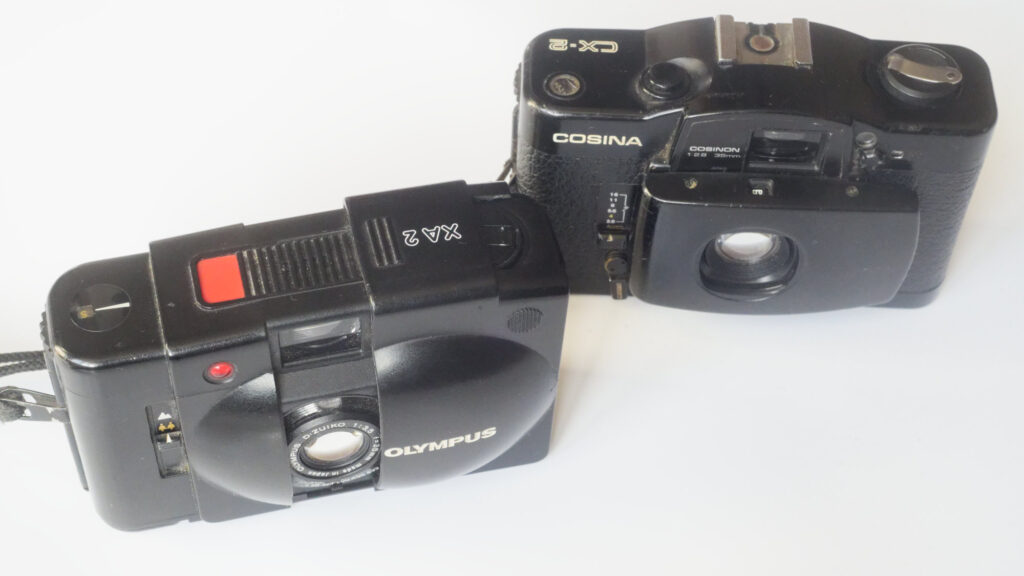
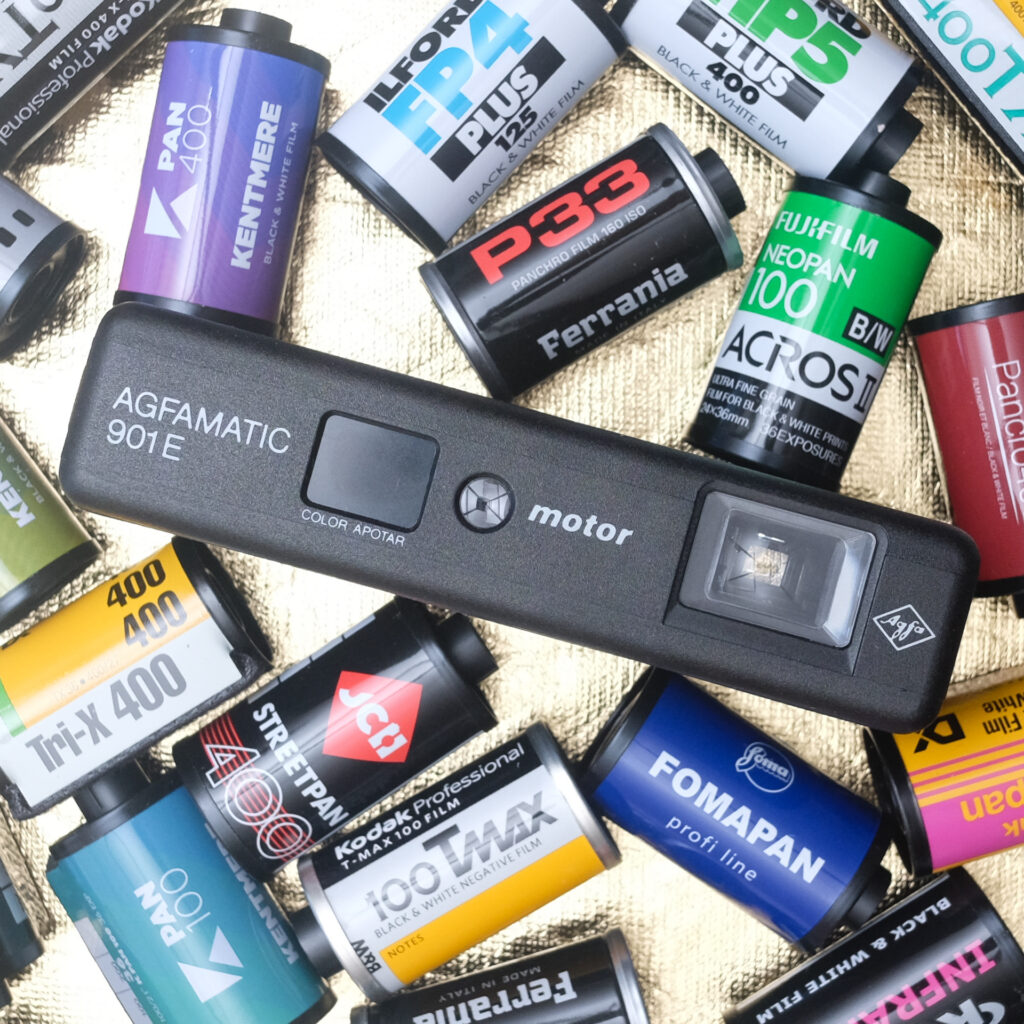
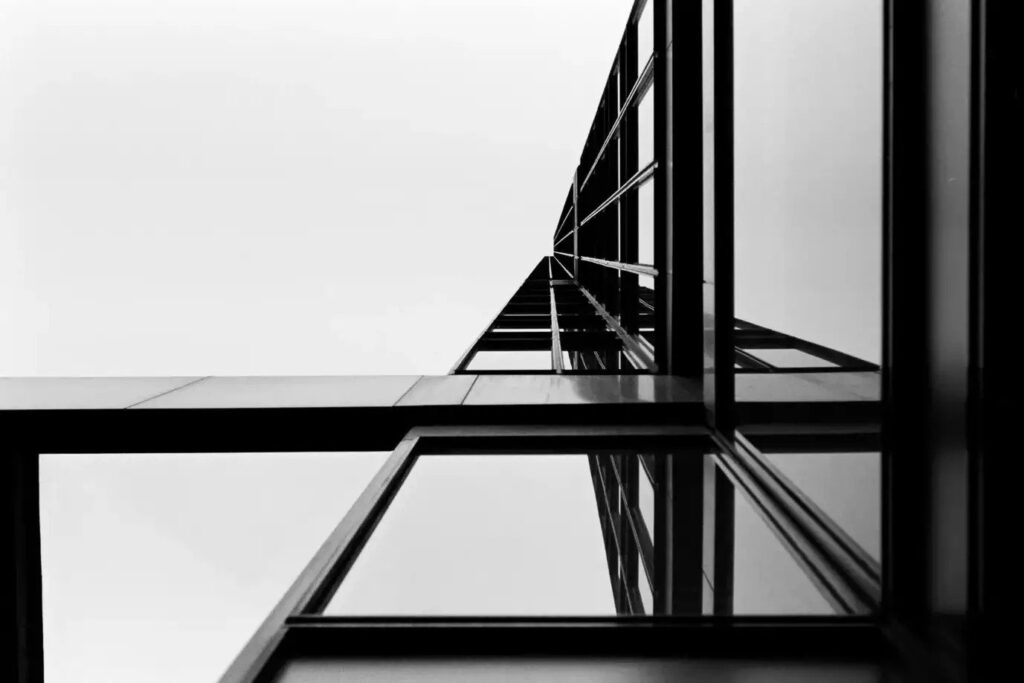
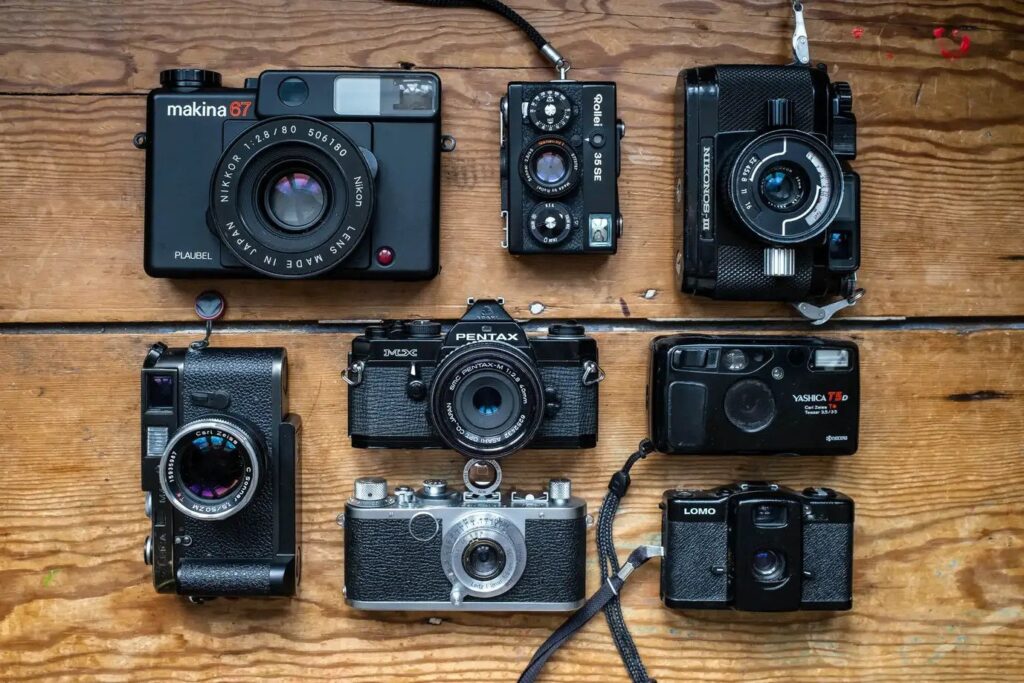
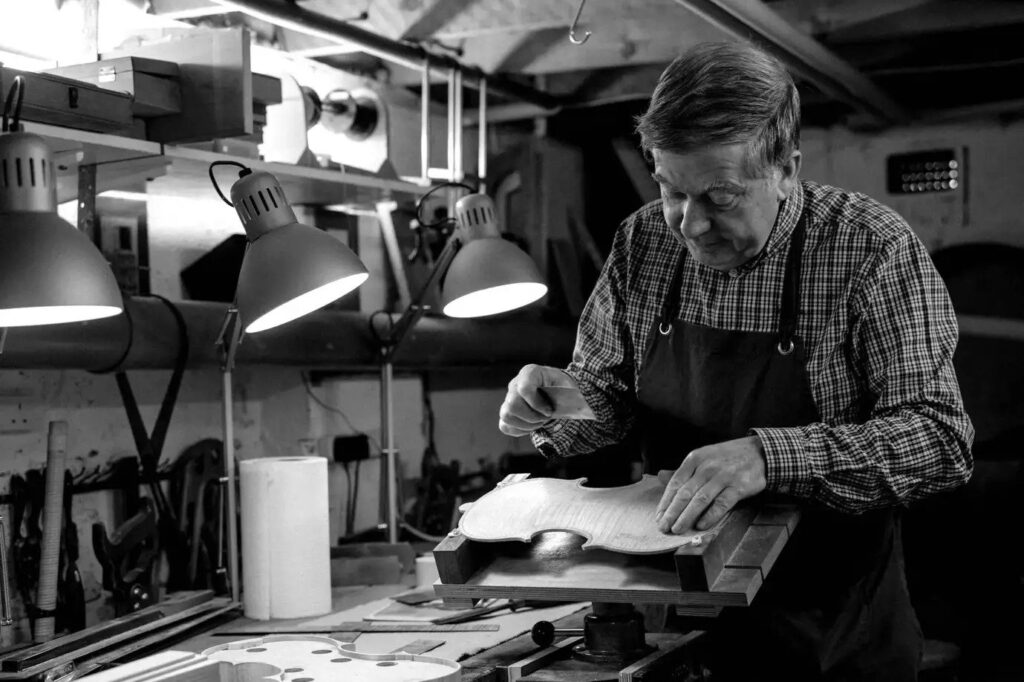
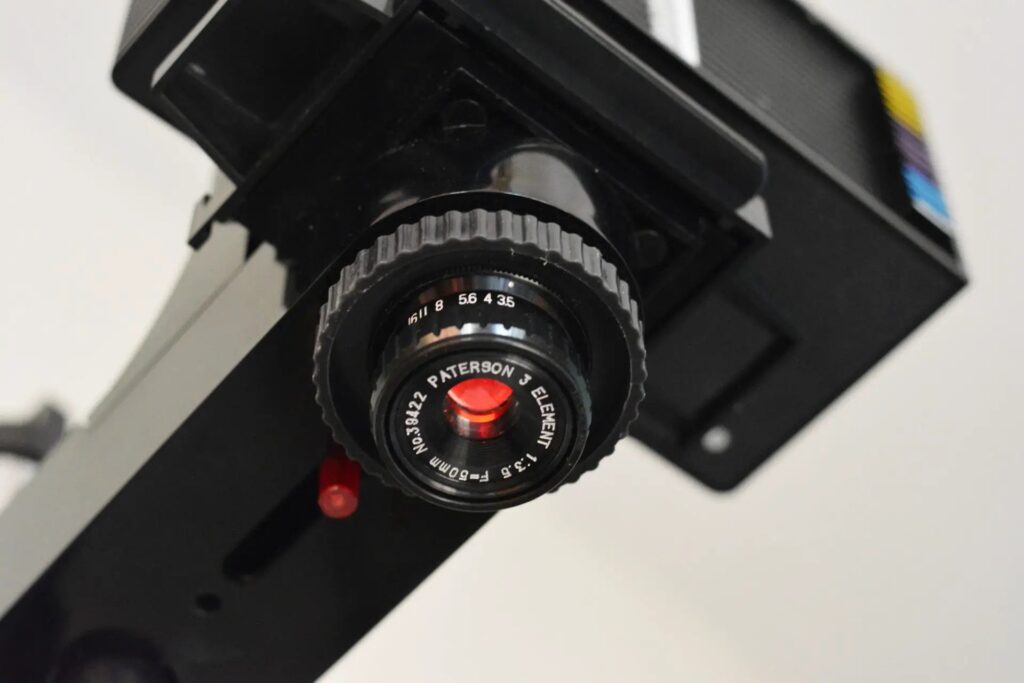
Comments
Michael Aaron Sherman on Expo Watch Camera – Shooting a tiny pocket watch sized camera
Comment posted: 23/07/2025
Jonathan Leavitt on Expo Watch Camera – Shooting a tiny pocket watch sized camera
Comment posted: 23/07/2025
Gary Smith on Expo Watch Camera – Shooting a tiny pocket watch sized camera
Comment posted: 23/07/2025
Thanks for an interesting read on an unusual piece!
Comment posted: 23/07/2025
Tony Warren on Expo Watch Camera – Shooting a tiny pocket watch sized camera
Comment posted: 23/07/2025
Comment posted: 23/07/2025
Steviemac on Expo Watch Camera – Shooting a tiny pocket watch sized camera
Comment posted: 24/07/2025
David Campbell on Expo Watch Camera – Shooting a tiny pocket watch sized camera
Comment posted: 25/07/2025
By the way, your 3D-printed film plane looks great. Did you try to copy a real one, or did you just reverse engineer one that would fit the space and do the job?
Comment posted: 25/07/2025
Jeffery Luhn on Expo Watch Camera – Shooting a tiny pocket watch sized camera
Comment posted: 25/07/2025